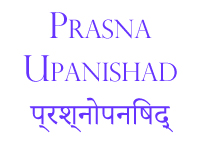the upanishads
The Sanskrit word “Upanishad” in its literal definition means “to sit down near”. In ancient India the Upanishads represented secret teachings reserved for those who sat at the feet of their guru. These texts full of wisdom (whose authors are not known) are also referred to as Vedānta, meaning either the “last chapters of the Veda” or “the highest purpose of the Vedas”. While the main parts of the Vedas contain mostly descriptions of rituals and prayers, the Upanishads are focusing on the realization of the Ultimate – the Knowledge of the Self.
 The Muktika Canon lists 108 Upanishads, of which ten are widely considered as the Principal Upanishads.
The Muktika Canon lists 108 Upanishads, of which ten are widely considered as the Principal Upanishads.



